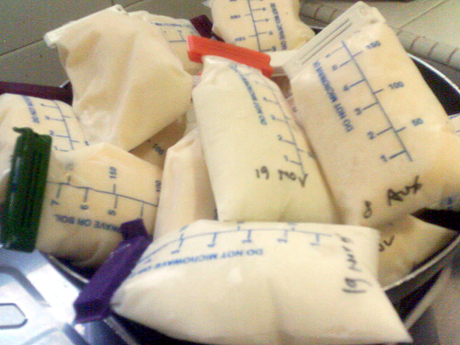Delayed Cord Clamping and Anemia in Breastfed Infants
Does delayed cord clamping help prevent anemia in breastfeeding infants? The American Academy of Pediatrics, in its 2010 clinical report Diagnosis and Prevention of Iron Deficiency and Iron Deficiency Anemia in Infants and Young Children (0-3 years of age) recommends that all infants receive iron supplementation until they begin eating iron-rich solids at 6 months of age.
Why is the amount of iron in breastmilk not enough for the infant? It is understandable that breastmilk is low in vitamin D, since vitamin D naturally occurs from sun exposure, and nursing women spend much more time indoors as compared to the past. Women can take enough vitamin D as a supplement to reach sufficient levels in their breastmilk. But unlike vitamin D, women cannot ingest sufficient iron to increase the iron content of their breastmilk. Why do infants need more iron than what breastmilk provides?
It appears that the answer to this question may have to do with the iron stores infants receive at birth. Research now demonstrates that if the umbilical cord is clamped too soon, the infant will not receive a sufficient transfusion of iron that he can squirrel away for the next 6-9 months until he can ingest the iron on his own. If the infant receives a generous transfer of iron from the placenta through the umbilical cord immediately after birth, then the infant won’t need as much iron in breastmilk. Low iron levels in breastmilk helps keep the iron levels in the infant gut low, which prevents dangerous intestinal bacteria from feeding off of the iron and becoming stronger.
The authors of a recent article entitled ‘Placental transfusion: a review’ review the research on delayed cord clamping and conclude that delayed cord clamping should be the normal process after birth, and that early cord clamping prevents the natural blood transfusion from the placenta to the infant.
The authors indicate that all are likely benefits of delayed cord clamping except for one:
- Improved iron stores for infants at 4-6 months
- Decreased risk of neonatal jaundice
- Enhances blood flow to the brain
- Improved heart rate
- Reduction in necrotizing enterocolitis (NEC)
For the answer, click here.

